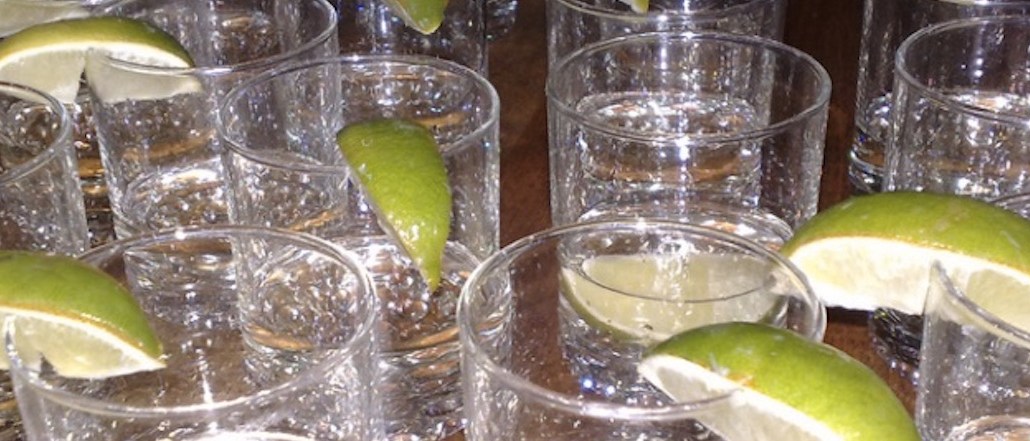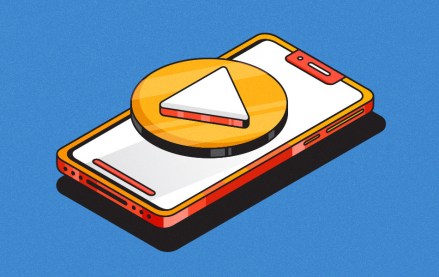Join us Dec. 1-3 in New Orleans for the Digiday Programmatic Marketing Summit
‘Not drinking is seen as weakness’: How British drinking culture hampers diversity in ad land

Booze is a big part of British culture, and it’s a big part of advertising and media culture. Black-tie awards, boozy lunches and dinners with clients, work “jollys” abroad or at home, have been a staple in British agency and media life for years. For many, alcohol is an important part of unwinding and bonding with colleagues and clients. And although the volume has receded over the years, this party culture rages on.
But for some in ad land, the pressure of having to maintain heavy drinking, either in the form of client entertainment or sustaining relationships with colleagues, can be a nightmare. They might be in recovery or simply not a fan of waking up with a splitting headache to a spinning room.
“There’s certainly a pressure to drink, and an immediate assumption that something’s ‘wrong’ with you if you don’t want to drink,” said an agency marketing director who preferred to remain anonymous. “Someone looked at me a few weeks ago when I was abstaining and said, ‘Come on, you’re better than that,’ as if choosing a soft drink constitutes weakness.”
A gender imbalance
For women, it can get particularly awkward — and personal — if they don’t want to imbibe at a work event: The immediate conclusion is often that they’re pregnant. And it’s not just men that make the assumption. The lengths to which some women feel they must go to avoid that assumption is staggering. A senior sales manager at an advertising firm confessed that she’s resorted to pretending to slur on evenings out with sales colleagues, to convince them that all’s well, and she’s good and drunk.
In this particular case, the exec had just found out she was pregnant and didn’t want to share it with her team yet. Her worry is that they’ll think if she can’t drink, she’ll be less valuable to the team.
“I’ve definitely felt the pressure to explain why, when people are expecting you to drink and stay out until 3 a.m.,” she said. “I dread the nights now and worry that people will think I’m less of a person. Or that I’ll be less good at my job and stop getting business because I’ve not been doing tequilas with 23-year-old planners who hold so much sway over client spend.”
She has allies whom she’s confided in at work. But for now, all they’ve done is help her maintain the facade. “It’s rubbish. I shouldn’t feel pushed into a corner, nor have to explain myself if I choose to say no.”
A self-stirring cycle
Several other agency execs, both men and women, have said they “get a lot of flack” from colleagues for not drinking. “A good tactic is to get a soft drink that could be alcoholic, like a soda water with lime. As long as you always have a drink in your hand, you’re left alone,” said one.
Some believe the reputation of advertising and media as a party culture attracts party-minded, younger new hires to the industry. “You attract grads who want to carry on drinking like they did at Uni and want to go into media and advertising because of that work-hard-play-hard reputation,” said VCCP Media chairman Paul Mead.
Indeed, the funny thing about human nature is that people naturally want to be surrounded by people who are similar to them. One agency marketing director admitted that the social committee within the agency responsible for planning the agency’s fun activities and events is made up of people who all enjoy the same pastime: getting smashed.
“We realized a lot of the stuff our social committee was doing was booze related,” said this marketing director. “People work hard, and at our company drinks recently, a lot of people went out and had quite a few. But it does make you question if we’re being inclusive of everyone.” Having a teetotaler CEO come in over the last year has helped accelerate change.
One problem, of course, is that important, longstanding relationships are formed and cemented over alcohol. For some CEOs, spending time with teams in the pub, has major advantages. “Pub culture as a nation, can’t be underestimated. It’s an extension of the office. You can learn a lot about what’s going on in your office from there. And it can often turn into an informal counseling session; it’s useful for both,” said a former agency CEO.
“Drinking shouldn’t go away,” agreed Mead. “It’s for different personalities, can be a great leveler. People wouldn’t ask the same questions, and it can break down barriers and create bonds. But whether or not you drink, there has to be things that an agency does to make you feel part of their culture.”
Signs of sobriety
And yet with such a massive spotlight on diversity, a big part of a CEO’s role today is to build the culture beyond putting a card on the bar. And it is happening, albeit more slowly in some places than others.
There have been internal drives within agencies to attract young talent from diverse backgrounds and also to introduce more activities that aren’t dominated by drinking. There’s been a natural trend in promoting health and well-being, which has led to early-morning spinning and cycling excursions becoming popular within the ad industry. Yoga classes, massages and other social activities like kids Christmas parties for parents with young children, are also happening more frequently.
VCCP Media has its own softball team, which meets at lunch and after work, and people also go running together. Meanwhile, Essence has introduced “international hour” for when new starters join from different countries. They section off budget to source local delicacies and specialties of those nations. So far, it’s done Canada and Poland.
Diversifying the range of activities is also vital for being inclusive of parents. Young mums and dads are limited by time more than anything else, and it’s easy for them to miss out on after-hours socials. “We do now have regular conversations about whether we just put money behind the bar or do something more inclusive, especially if there is a growing number of pregnant women or young mums and dads,” said an agency marketing director.
Then there are those who don’t want to — or can’t — drink for religious reasons.
“When I first started after graduating, the building I worked in had a pub on the corner and everyone would go after work,” said Shelina Janmohamed, vp of Ogilvy Noor, the division of Ogilvy dedicated to Muslim audiences. “I was missing out every week on the bonding of the team, and choices like that are particularly hard for younger people to make. You want to accelerate your career and build your network and relationships, but you don’t want to feel like the one that’s left out or different.”
Ogilvy recently held an event to celebrate Janmohamed’s new book, “Gen M,” which focuses on young Muslims and their increasing impact and influence on marketing and consumerism. Only non-alcoholic cocktails — rosemary lemonade and kulfi ice-cream drinks — were served. “It’s important to have more variety of soft drinks,” she added. “At a lot of events, the only soft drinks you can get are orange juice or fizzy water. There’s only so much orange juice you can drink without feeling sick.”
More in Marketing

After early success, the NFL plans more creator-led broadcasts
After tapping four creators to host alternative broadcasts on YouTube of this season’s opening game, the league is already figuring out who’s next,

How AI is reinventing the holiday gift guide
Beyond driving immediate sales, brands this year are angling to get into gift guides to help them with SEO and GEO.

In Graphic Detail: The rise of micro dramas that are attracting big ad dollars
Micro dramas are attracting attention, so Digiday has charted the format’s revenue forecasts and viewership, to understand how we got here.





